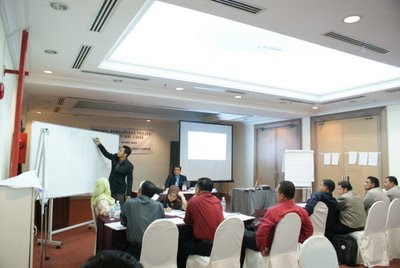Google
Google's mission is to organize the world's information and make it universally accessible and useful. The company, founded in 1998, operates one of the most popular, and powerful, Internet search engines, offering targeted search results from more than 8 billion Web pages. The site, which ranks results based on a proprietary algorithm, attracts an audience of more than 80 million people in English-speaking markets; Google also offers search results in 35 other languages. The company generates revenue through ads that are targeted by keywords. Google had 2004 revenues of $3.2 billion and employs 3,000 people.
Google is recognized in this year's North American MAKE study for its strong corporate knowledge-driven culture, knowledge-based products/services/solutions, and maximizing the value of the company’s enterprise intellectual capital. This is the first time that the company has been recognized as a North American MAKE Winner.
General Electric
GE is a diversified manufacturer of transportation equipment; appliances; lighting, electric distribution and control equipment; nuclear reactors; medical imaging equipment; and plastics. The company also is one of America's largest financial services companies, and has media interests including NBC television. The company employs over 300,000 people and had 2004 annual sales of $152.4 billion.
In this year's North American MAKE study, General Electric is recognized for its strong corporate knowledge-driven culture (1st place), and developing knowledge workers through senior management leadership. GE is a three-time North American MAKE Winner.
Hewlett-Packard
Hewlett-Packard is a leading global provider of IT products, technologies, and solutions and services to consumers and business. HP's strategy is to offer products, services and solutions that are high-tech, low-cost and deliver the best customer experience. The company employs 150,000 people and does business in more than 170 countries. Revenues reached $79.9 billion for the fiscal year that ended October 31, 2004. HP annually spends $4 billion on research and development.
"Collaboration and knowledge management are key components of Hewlett-Packard's business operating strategy," said Anne Murray Allen, director of Knowledge & Intranet Management within HP's Global Operations and IT organization. "We recognize the importance of being able to tap into the brain power of the entire HP organization while working virtually around the globe. We continue to look at ways to better expand and leverage HP's collective knowledge assets. The goal of HP's overall KM strategy is to make HP employees the most connected, informed, and productive in the world."
HP is recognized in the 2005 North American MAKE study for its knowledge-based products/services/solutions, and collaborative enterprise-wide knowledge. Hewlett-Packard is a three-time North American MAKE Winner.
IBM
IBM is a leading provider of mainframe computers, servers, storage systems and peripherals. The company also is a leader in information technology solutions and consulting, and business process outsourcing. IBM employs over 350,000 people and operates in almost country in the world. In 2004, IBM had global sales of $96.3 billion.
IBM is recognized in the 2005 North American MAKE study for developing knowledge workers through senior management leadership, and collaborative enterprise-wide knowledge. IBM is a four-time North American MAKE Winner.
McKinsey & Company
McKinsey & Company, founded in 1926, is perhaps the most knowledge-oriented firm within the global management consulting industry. McKinsey is not the largest consulting company in the world ($3.5 billion in annual revenues and 11,500 staff working in 80 offices in 40 countries), but it is among the most profitable and many consider that it has the strongest brand image. McKinsey & Company spends at least 10% of its annual revenues on managing and sharing knowledge.
In this year's North American MAKE study, McKinsey is recognized for developing knowledge workers through senior management leadership, and maximizing the value of the company's enterprise intellectual capital. McKinsey is a four-time North American MAKE Finalist and three-time North American MAKE Winner.
Microsoft
Microsoft is a leader in software and Internet technologies for personal and business computing. The company, established in 1975, also is expanding into the mobile communication and entertainment markets. Headquartered in Redmond, Wash., Microsoft has annual sales of $38.8 billion, subsidiary offices in more than 60 countries and employs over 57,000 people worldwide.
Microsoft is cited in the 2005 North American MAKE study for its collaborative enterprise-wide knowledge sharing, organizational learning, and transforming enterprise knowledge into shareholder value. Microsoft is a four-time North American MAKE Winner.
SAIC
Founded by Dr. J. Robert Beyster and a small group of scientists in 1969, SAIC now ranks as the largest employee-owned research and engineering firm in the United States. SAIC is dedicated to delivering best-value services and solutions based on innovative applications of science and technology. SAIC had 2004 annual sales of $7.2 billion; the firm and its subsidiaries employ more than 42,000 people in over 150 cities worldwide.
"SAIC is very proud to be recognized as one of the Most Admired Knowledge Enterprises in North America. We believe leveraging our collective know-how and experience is key to our performance as a leading systems and solutions company, creating sustainable advantage through innovative applications of technology and domain expertise," said Kent Greenes, SAIC chief knowledge officer and senior vice president. "We use enabling processes and technologies such as communities of practice, routine learning tools, and relevant knowledge repositories to harness the power of learning and turn science into solutions. One of our most powerful enablers is our culture. This provides tremendous motivation for our scientists and engineers and fuels the sharing of lessons learned to solve our customers' most important business and mission critical problems."
SAIC is recognized in the 2005 North American MAKE study for its knowledge-based products/services/solutions, delivering value based on customer knowledge (1st place), and transforming enterprise knowledge into shareholder value. SAIC is a two-time North American MAKE Finalist. This is the first time that the company has been recognized as a North American MAKE Winner.
Southwest Airlines
Southwest Airlines, founded in 1971, has expanded its low-cost, no-frills, no-reserved seats approach to air travel throughout the United States to serve 60 cities in 30 states. Southwest offers ticketless travel to minimize back-office costs and operates its own reservation system. A top-10 US airline, Southwest has enjoyed 32 straight profitable years. The company employs 32,000 people and had 2004 annual sales of $6.5 billion.
This 2005 North American MAKE Winner is recognized for its strong corporate knowledge-driven culture, and delivering value based on customer knowledge. This is the first time that Southwest Airlines has been recognized as a North American MAKE Winner.
3M
3M, founded in 1902, is a diversified technology company with leading positions in transportation; display and graphics; health care; safety, security and protection; electro and communications; industrial business; and consumer and office equipment and supplies. More than one-half of 3M's $20 billion annual revenues are derived from outside of the United States. The company employs 67,000 people, working at 132 plants and 189 sales offices worldwide.
3M is recognized as a 2005 North American MAKE study for its strong corporate knowledge-driven culture, and delivering value based on customer knowledge. 3M is a two-time North American MAKE Winner.
2005 North American MAKE Finalists
A total of 24 organizations were selected this year as North American MAKE Finalists (in alphabetical order):
- Accenture
- Amazon.com
- Apple Computer
- APQC
- Buckman Laboratories
- ChevronTexaco
- Dell
- Dow Chemical
- eBay
- Fluor
- Ford Motor Company
- General Electric
- Google
- Hewlett-Packard
- IBM
- Intel
- McKinsey & Company
- Microsoft
- Nalco
- Raytheon
- SAIC
- Southwest Airlines
- 3M
- Xerox
MAKE Research Program
Teleos, an independent knowledge management and intellectual capital research company, administers the Most Admired Knowledge Enterprises (MAKE) study program. The KNOW Network is a Web-based global community of organizations dedicated to networking, benchmarking and sharing best knowledge practices leading to superior organizational performance.
The MAKE research program consists of the annual Global MAKE study - the international benchmark for best practice knowledge-driven organizations - and MAKE studies for Asia, Europe, North America, India and Japan.
regards
-MZA-













































